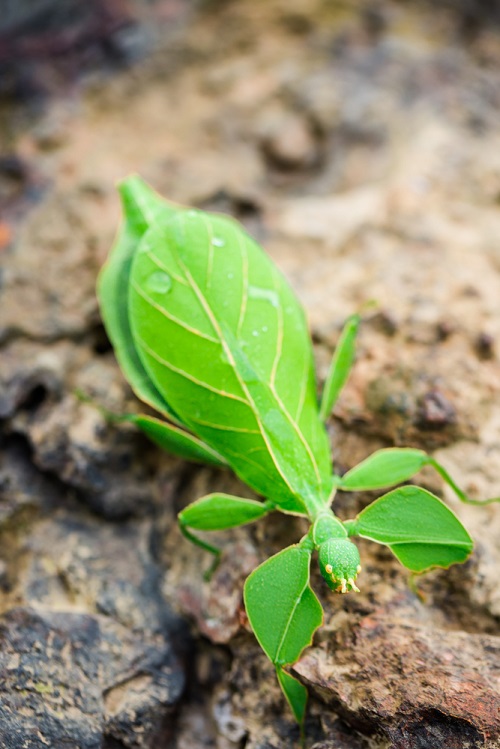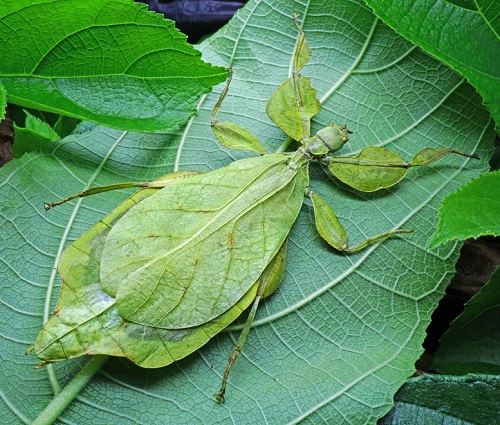Do you know What Do Leaf Bugs Eat? If you don’t have nay idea, then we are here to help you out! Read ahead!
What Do Leaf Bugs Eat? Curious about the diet of leaf bugs? Let’s find out the interesting foods that keep these special insects going!
Check out the list of bugs that look like lint here
Characteristics of Leaf Bugs
Leaf bugs, sometimes called Phylliidae, are fascinating insects that imitate leaves and move slowly. This helps them stay safe from animals that might want to catch them and lets them fit in with the plants around them.
1. Leaf-Like Appearance
They have bodies that look like leaves, helping them hide from animals that might want to eat them.
2. Slow and Flat
These bugs move slowly and have flat bodies, which helps them avoid being caught.
3. Long Antennae and Legs
Leaf bugs have long, thin antennae and legs that they use to feel and explore their surroundings.
4. Masters of Camouflage
Leaf bugs are champions at hiding and have patterns on their bodies that look like veins on leaves, making them blend in well.
5. Plant Eaters
Leaf bugs mainly eat plant material like leaves and sap. This keeps them well-fed and helps them stay hidden on plants.
6. Colors and Varieties
While green is common, some leaf bugs can be brown, pink, or red to match the plants they live on.
Most Common Types of Leaf Bugs
Leaf Bugs are nature’s magicians, using their leafy disguises to become part of the environment and stay safe.
1. Giant Leaf Insect
Scientific Name: Phyllium giganteum
This bug is a star in Southeast Asia, resembling a massive leaf and leaving everyone amazed.
2. Two-Spotted Leaf Bug
Scientific Name: Phyllium bioculatum
Living in Southeast Asia, it’s like a leaf with two special spots, fooling even careful eyes.
3. Philippine Leaf Bug
Scientific Name: Phyllium philippinicum
From the Philippines, its body imitates leaf veins, blending in like a pro.
4. Dry Leaf Bug
Scientific Name: Phyllium siccifolium
In Southeast Asia, this bug perfectly mimics a dried leaf, making it hard to spot.
5. Monteith’s Leaf Bug
Scientific Name: Phyllium monteithi
Found in Australia, it adds its own colors and designs to nature’s leafy palette.
What Do Bed Bugs Look Like? Find Out!
What Do Leaf Bugs Eat?
So, What Do Leaf Bugs Eat? Keep on reading!
1. Leaves
Leaf bugs love to eat leaves from various plants like ivy, rose bushes, oak, and maple trees. They choose leaves that look like their own bodies, helping them hide from animals that might want to eat them.
These leafy meals provide the bugs with the nutrients they need to stay strong and healthy.
2. Sap and Fruits
Sometimes, leaf bugs also sip on the sugary sap from plants. This sweet treat gives them extra energy and hydration. They can even snack on fruits that the plants produce, enjoying a juicy and delicious bite.
3. Nitrogen-Rich Plants
Leaf bugs have a taste for plants that are rich in nitrogen. This makes them munch on plants like clover and alfalfa, which are full of nutrients.
These nitrogen-packed plants give the bugs a boost of essential elements for their growth.
4. Other Insects
While they mostly eat plants, leaf bugs also sometimes catch and eat other small bugs, such as aphids and caterpillars. These protein-rich snacks help them get more nutrients and energy.
5. Nectar and Pollen
In a surprising twist, leaf bugs might also visit flowers for nectar and pollen. This isn’t their usual diet, but it’s interesting to see them trying new things.
When they sip nectar and collect pollen on their bodies, they unintentionally help in pollinating plants.





